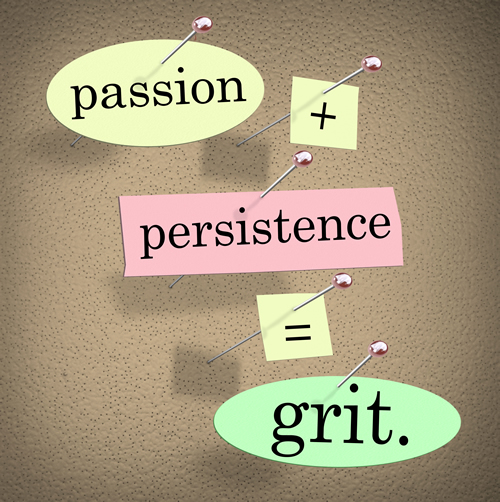“Fall seven times, stand up eight.” –Japanese Proverb
J.K. Rowling. Bill Gates. Oprah Winfrey. These are no doubt names that most students recognize as successful. But what often goes overlooked is the perseverance needed to achieve success, and that successful people—including these household names—often overcome great obstacles. To that end, the conversation in schools has shifted to resilience and grit, recognizing that people who demonstrate determination often end up being movers and shakers in today’s world.
Thanks to pioneering work by Carol Dweck, Martin Seligman, and Angela Duckworth, we now know that the ability to cope and persevere through setbacks and adversity can be learned and taught. In a related movement, educators across the country are leading the charge to implement social-emotional learning (SEL) programs and teach the core SEL competencies they’ve always known to be immensely valuable. By teaching skills ranging from self-management to responsible decision-making, educators hope to instill students with the positive mindsets, resilience, and grit they need to succeed in school and life.
Whether or not your school has adopted an SEL program, here are some tips for incorporating SEL instruction through literacy, with a focus on resilience. These actionable hints help students understand the value of resilience through everyday instructional activities.
1. Emphasize the journey over the accomplishment
No matter what subject you teach, you can underscore the importance of resilience within a given narrative. From the South Pole travel expedition to biographies on Malala Yousafzai, Martin Luther King Jr., and Bessie Coleman, it’s likely that whatever you’re reading showcases incredible resilience. In addition to discussing the accomplishments, emphasize the process, frustrations, state of mind, and points of learning along the way (e.g., Thomas Edison was a famous inventor who was fired from his first two jobs and made more than 1,000 attempts to create the light bulb. His continuous failure—or iteration, as we’d call it today—taught him to innovate). If you point out resilience enough times, students can learn to model and practice resilient thought, words, and actions in their own lives.
When teaching fictional texts, you can apply lessons in resilience to the hero’s journey. Discuss how heroes aren’t successful all the time. Pop culture is full of examples that students will find engaging: point out protagonists in Star Wars, Lord of the Rings, or Harry Potter. Just as continuous success doesn’t make for good books and movies, it’s also not realistic in real life. When heroes fall, analyze the text to determine what they must be thinking, who helps them, and their mindset at the time. Discuss how despite repeated failures, all heroes complete their journey.
Though this approach works well with both fiction and nonfiction, the nonfiction lessons have the added benefit of demonstrating to students that if the real-life protagonist managed to overcome so much adversity and still persevere, students can, too.
2. Teach their brain’s biology and give them the tools to influence it
We rightly think of the brain as the center of knowledge, and yet we don’t spend enough time building up knowledge about the brain, especially in the elementary and middle grades. Without this information, young people might not realize that their brains are malleable and involved in important processes, believing instead that their brains are static containers for facts.
Have your students read about the biology of brain and impulse and how during their key development years their prefrontal cortex is still forming. Show them how stress and other emotions impact their brains. Teaching them what’s happening in their bodies is the first step to empowering them to take control of their behavior and their state of mind.
Next, they can read about the power of positive thinking and their ability to choose their own mindset. Augment your lesson by watching and discussing powerful podcasts and TED talks, many of which feature young people. Kid President was a personal and class favorite.
Use what they learn about biology and mindset to create a resilience toolkit. As they’re reading, they can collect strategies for resilience and write down meaningful mottos. Whenever kids are experiencing setbacks like frustrations with their comprehension of a text or disappointment with a test result, encourage them to refer to their toolkits for reinforcement and support.
3. Help them find their voice
Students today are a part of a unique generation. They are engaging in less risky behavior, and their performance on the famous marshmallow test of delayed gratification has actually improved vs. previous generations. The Parkland student advocates are a notable example: They’re showing many students that they can choose to find their agency and their voice when they perceive a need for change.
Start with a working definition of injustice. What is the activists’ role in relation to injustice? To connect history to current events, read and discuss times in the past when kids were activists. Activism may look different at different schools, but research shows that it’s good for kids.
Help your students take active roles in their own communities by examining the role of the individual, their concerns, and what influence they can exercise over those concerns. This approach reinforces students’ own agency, and how it can be deployed for positive change. Teachers looking to amplify their students’ voices can also reference this free Newsela text set.
We know so much more today than we did just a few years ago about why some students are hindered by adversity, while others persevere and even excel. With SEL-informed literacy instruction, we have the power to help them build the resilience they need to be successful today, tomorrow, and throughout their lifetimes.
- 7 reasons to ditch recipe-style science labs - November 22, 2024
- As a paradeducator, here’s how I use tech to help neurodivergent students gain agency - November 22, 2024
- 5 ways school districts can create successful community partnerships - November 21, 2024


